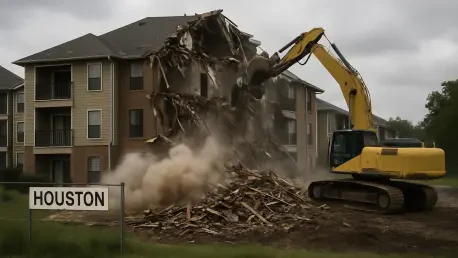In the heart of Houston’s Spring Branch neighborhood, a long-abandoned apartment complex at the intersection of Westview Drive and Gessner Road has become a persistent source of concern for residents and city officials alike, with repeated fires and safety hazards prompting drastic action. Over the past several years, this dilapidated property has been the site of numerous emergencies, including a blaze as recent as this week, underscoring the urgent need for intervention. The city has now taken ownership of the land, marking a significant step toward addressing the dangers it poses. Beyond the immediate risks of fire and unauthorized occupation by squatters, as noted by local neighbors, the site represents a broader challenge of urban decay in a community striving for revitalization. This development raises critical questions about public safety, taxpayer investment, and the timeline for meaningful change. As Houston moves forward with plans to demolish the complex, the story reveals a complex interplay of community needs, financial commitments, and bureaucratic hurdles that must be navigated to transform a blighted area into a safer, more functional space.
Addressing Persistent Safety Threats
The decision to demolish the troubled apartment complex in Spring Branch stems from a history of safety violations that have plagued the area for years, making it a priority for city intervention. Repeated fires, including a notable incident just days ago, have highlighted the dangers of the abandoned structure, which has also become a haven for squatters, further compounding risks to the surrounding neighborhood. Local residents, frustrated by the ongoing issues, have voiced concerns about the property’s condition, pointing to it as an eyesore and a magnet for criminal activity. In response, Houston has acquired the site using over $18 million from a redevelopment board, supplemented by an additional $2 million from citywide taxpayer funds specifically allocated for demolition. Immediate measures, such as reinforcing perimeter fencing and bolstering security through police and private patrols, are being implemented to mitigate risks in the short term. This acquisition represents a pivotal moment, signaling the city’s commitment to eliminating a longstanding hazard, though the path to a permanent solution remains fraught with challenges.
Navigating Delays and Future Redevelopment
While the purchase of the hazardous property marks progress, the road to demolition and redevelopment is far from straightforward, with bureaucratic and environmental obstacles causing significant delays. City officials, including Council Member Amy Peck, have expressed a desire for swift action, yet environmental studies and permitting requirements could push the teardown timeline to several months from now, with full redevelopment potentially taking years to complete. The vision for the site is ambitious, encompassing plans for police and fire stations alongside flood mitigation projects like detention basins to address chronic flooding in Spring Branch. Financially, the burden extends beyond the initial costs, as the redevelopment board, initially set to dissolve soon, will now continue collecting taxpayer funds for many years to come to support this endeavor. This prolonged timeline tests the patience of a community eager for resolution, yet it also reflects a broader commitment to transforming the area into a safer, more resilient space. As Houston navigates these complexities, the focus remains on balancing immediate safety needs with long-term urban planning goals.









